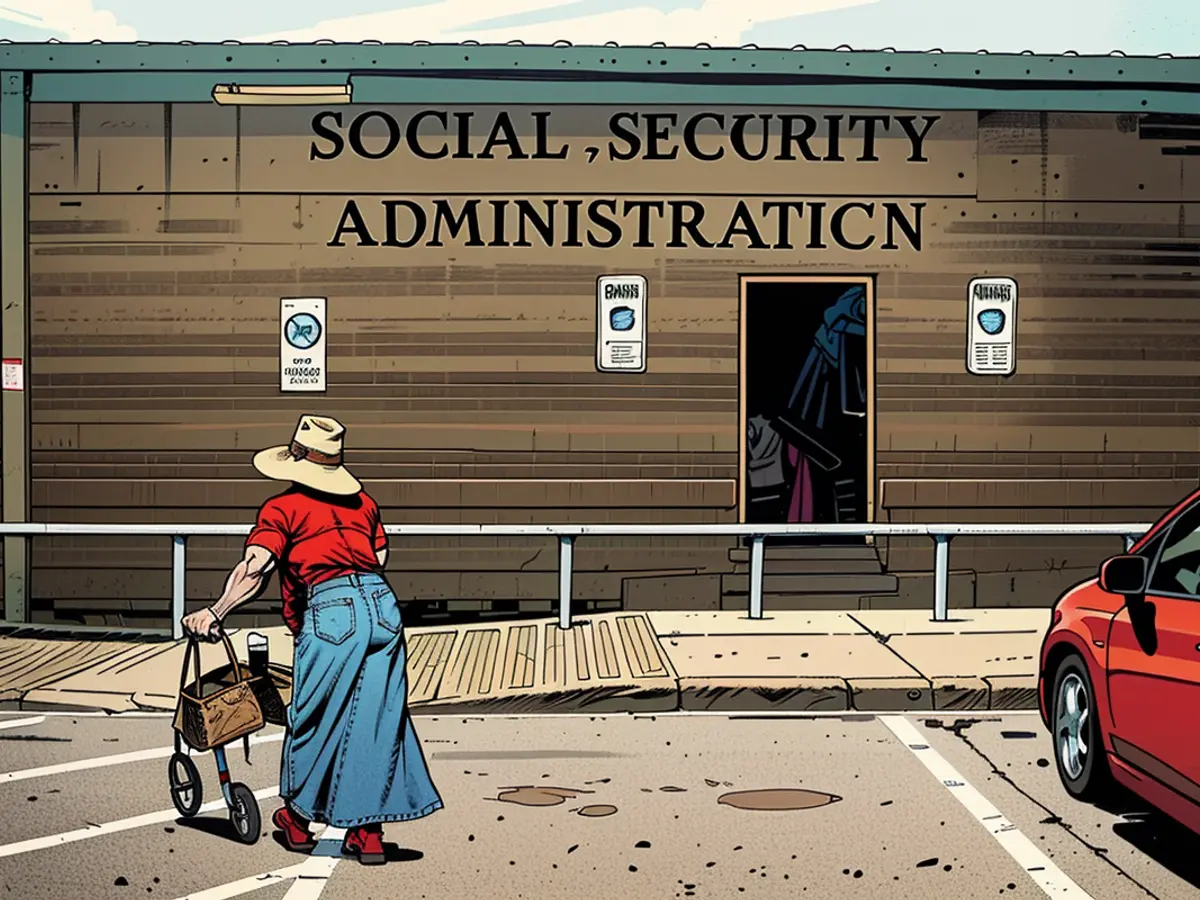Trump pledges to safeguard Social Security, potential measures might result in benefit reductions within six years.
Trump's campaign propositions could exhaust Social Security's trust funds by 2031, a period of three years earlier than previously anticipated, as per a recent evaluation from the Committee for a Responsible Federal Budget, a nonpartisan organization that keeps tabs on government expenditures. This would subsequently necessitate a 30% reduction in benefits unless legislative action is taken.
"I've hardly ever witnessed a plan that would have such a substantial impact on solvency during a general election campaign," Marc Goldwein, the committee's senior policy advisor, shared with CNN.
The financial stability of Social Security has been a source of concern for quite some time now. As the population ages, the number of beneficiaries has rapidly increased, while the workforce contributing to the system has reduced in size. The combined retirement and disability trust funds are currently projected to deplete by 2034, resulting in a 23% decrease in benefits the following year, based on a report by the Congressional Budget Office, which the committee referenced for their analysis. (Social Security's trustees estimate that the combined trust funds would be depleted by 2035.)
If Trump's proposals were implemented, the monthly payments would be 33% lower in 2035, as per the committee's findings. They did not carry out a detailed analysis of the impact of Vice President Kamala Harris' platform on Social Security due to the presumptive minimal changes.
The Trump campaign countered the committee's report, with spokesperson Karoline Leavitt stating that the watchdog has been "consistently incorrect" in their assessments over the years.
Tax cuts on Social Security benefits
During the heated presidential race of 2020, Trump introduced a series of targeted tax incentives to appeal to specific voter demographics. In total, these policies, coupled with a few others, would significantly reduce income flowing into the entitlement program, to the tune of $2.3 trillion over a decade, as per the committee's estimation.
The most expensive proposal involves the elimination of federal income tax on Social Security benefits, which would drain the program's revenue by $950 billion over a decade, according to the committee.
Approximately half of beneficiaries, primarily those with higher incomes, pay federal income tax on their Social Security payments. They are subject to taxes if their total income exceeds $25,000 per individual or $32,000 for married couples.
Initially, Trump's proposal would mainly benefit individuals earning between $63,000 and $206,000, who would see the largest increase in their after-tax income, as per the Tax Policy Center. Those earning more or less wouldn't experience much, if any, change.
Once Social Security's trust funds run out of funds, however, lower-income recipients would be the most affected. They typically would not qualify for the tax break and would experience the full impact of the benefit reduction, Goldwein noted. For better-off recipients, the tax relief would help mitigate at least some of the benefit reduction.
Eliminating taxes on tips and overtime pay
Trump has also pledged to eliminate federal taxes on tips and overtime compensation. Although he hasn't provided specifics on either proposal, he has hinted at eliminating both income and payroll taxes on tips. (Harris, on the other hand, has promised to remove federal income taxes on tips but would continue to levy payroll taxes, which support Social Security and Medicare.)
Trump's plan would reduce Social Security's revenue by around $900 billion, as per the committee's assessment.
Many tipped workers, however, would not benefit from the elimination of federal income taxes on tips since they are generally young, unmarried, and low income and therefore do not earn enough to pay income tax, according to the Budget Lab at Yale University. Less than 3% of all families would receive a tax cut. The typical break would amount to $1,700, but for those at the bottom quintile of the income scale, it would only average $200.
If Trump also eliminates payroll taxes, tipped workers would potentially receive a tax break, averaging more than $2,100, as per the Tax Policy Center. However, these workers would have smaller Social Security payments in retirement due to the fact that benefits are tied to reported earnings.
Similarly, workers might receive less from Social Security in retirement if they do not pay payroll taxes on their overtime compensation. Roughly 12% of hourly workers and 5% of salaried workers worked overtime, as per the Budget Lab at Yale.
The committee examined Trump's tariffs and immigration measures as well, estimating that they would reduce revenue to Social Security by $400 billion over a decade. The former president's drive to increase tariffs could lead to higher inflation, translating to a larger annual cost-of-living adjustment for Social Security. Moreover, restricting unauthorized immigration and enhancing border security might reduce the number of undocumented individuals contributing to the Social Security system.
"Once more, Trump portrays himself as an ally of the working folk, only to propose strategies that jeopardize the advantages they've earned, particularly in their golden years," the statement reads. "It's reckless for a presidential hopeful to advocate for policies that speed up the bankruptcy of the Social Security reserve fund, resulting in an even more drastic benefit reduction if the fund depletes."
CNN’s Matt Egan contributed to this report.
The discussion surrounding Trump's campaign proposals and their impact on Social Security has brought politics into the limelight. Critics argue that the proposed tax cuts on Social Security benefits and tips could exacerbate the financial instability of Social Security.
If Trump's tax cuts on Social Security benefits are implemented, it could significantly reduce income flowing into the entitlement program, potentially leading to a reduction in benefits for lower-income recipients in the future.








